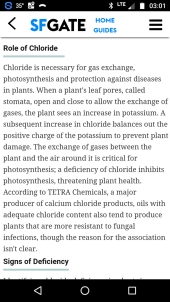posted 10 years ago
caused by too much (NP)K whether chemical or organic, which leads to disease and pests in the plants.
i have been talking for years about how too much feeding of plants (whether organic or chemical) leads to pest attacks and diseases. it is great to finally see the mechanism where that happens written out. many people believe that it is not possible to over feed plants with organic material but this is not true as this shows.
also when the plants are in disequilibrium they are no where near as healthy. mabe the brix index is a way of telling if the plants we are eating are in equilibrium.
this is from regeneration of the soil by claude bourguignon and there is a whole lot more good stuff in this book.
normally when the plant takes up potassium from the soil solution and brings it into the membrane, it immediately releases another unit of potassium into the cell sap. the plant has no regulatory system for the uptake of potassium. if you put a lot of potassium in the cell the plant is unable to regulate its uptake and absorbs high quantities of it. consequently you have a lot of positive charge on the membrane. to be sure to have this you have to put in a lot of phosphorus because potassium is pumped b ATP which uses phosphorus. so if you put more phosphorus a lot of potassium gets pumped into the membrane. then when you put a lot of nitrate in the soil, when you put a lot of nitrate in the soil, what happens? the concentration of nitrate inside the cell increases a lot. on the electric side there is no problem as there is a balance: the plus charge of potassium is compensated by the minus charge of nitrate. the big problem however is on the osmotic side. an atom alone has no osmotic charge. it has no salty reaction. but a molecule like nitrate has a high salty concentration and thus has an osmotic force. owing to this the plant is obliged to bring a lot more water inside the cell. we call this turgor pressure. so the plant becomes full of water, extremely fragile and susceptible to attacks of disease, bacteria and so on. then you have to use pesticides. in the end what happens is that you eat plants which are in disequilibrium.
--
At the moment of commitment the entire universe conspires to assist you. Whatever you can do or dream you can do begin it now. Boldness has genius, magic and power in it. Goethe
Charlotte +91 9505215498
www.handsonpermaculture1.org
Charlotte Anthony
The Mother Who Plants Trees
http://www.handsonpermaculture1.org
victorygardensforall@gmail.com







